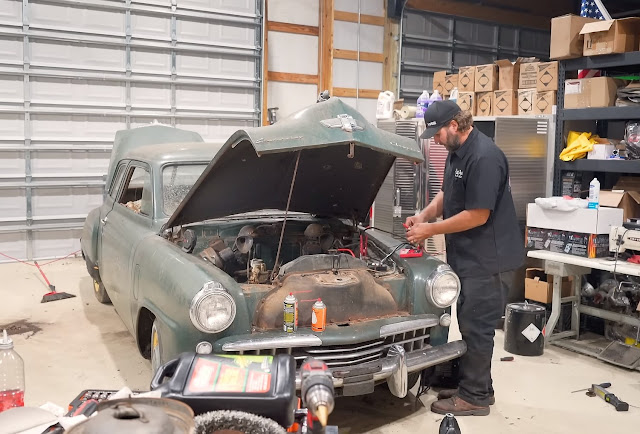Established in 1852, Studebaker initially crafted wagons, carriages, and harnesses. It transitioned into the automotive industry in 1902, commencing with electric vehicles and later venturing into gasoline-powered ones in 1904. By the onset of World War II, Studebaker had earned renown for its commitment to quality, durability, and reliability.

Post-World War II, Studebaker distinguished itself by introducing groundbreaking designs. In 1947, the Starlight coupe, designed by Virgil Exner, revolutionized the industry with its distinctive flat trunk lid and wraparound rear window. The company continued its innovative streak in 1950 with the introduction of the "bullet nose" styling, setting its cars apart as futuristic compared to competitors.
Struggles and Closure

However, the early 1950s brought challenges, including the Ford-GM price war, pushing Studebaker to the brink of bankruptcy. An unsuccessful merger with Packard ensued, leading to the closure of the company in 1967.
Over 50 years later, certain Studebaker models, such as the Avanti and the Golden Hawk, have gained a devoted following, commanding significant prices in the market. Despite this, many Studebaker models, like the Commanders, Presidents, Champions, and Larks, languish in junkyards, overlooked by enthusiasts.

One such overlooked gem, a 1948 Champion, recently caught the attention of the automotive community. Discovered in Illinois, this third-generation Studebaker had been retired since 1976, spending 45 years in an old garage before being purchased. After two years in a field, the Champion, with its hood stuck shut, hadn't tasted gasoline in nearly five decades.
Rather than succumbing to the fate of being dismantled, the Champion found a savior in the form of YouTube's "Vice Grip Garage." The host, undeterred by the challenges posed by the 47-year slumber, managed to coax the old inline-six engine back to life. Remarkably, the Champion retained its original mill.
The Champion's Technical Specs

For those unfamiliar with the third-gen full-size, the Champion came equipped with a 170-cubic-inch (2.8-liter) straight-six engine, producing 80 horsepower initially and upgraded to 85 horses in 1950. While modest by contemporary standards, it was more than sufficient during its time.
Despite its decades-long hiatus, the Champion displayed surprising resilience. Minimal body rust and a relatively intact interior, albeit with some seat and door panel damage, position it as a prime candidate for restoration. While a complete overhaul is necessary, the potential exists for it to emerge as a well-preserved survivor without requiring extensive and expensive intervention.
A video showcasing the weathered green beauty of the resurrected 1948 Champion is available below, capturing the excitement of bringing a neglected Studebaker back to life.
# FAQs: Studebaker Revival
### Q1: What distinguished Studebaker in the post-WWII era?
A1: Studebaker stood out post-World War II with innovative designs like the Starlight coupe and the "bullet nose" styling, setting a futuristic tone in the automotive industry.
### Q2: What led to Studebaker's closure in 1967?
A2: Studebaker faced financial challenges, exacerbated by the Ford-GM price war in the early 1950s, eventually leading to an unsuccessful merger with Packard and the closure of the company in 1967.
### Q3: Why is the 1948 Champion significant?
A3: The 1948 Champion, discovered after 47 years of dormancy, symbolizes the potential revival of overlooked Studebaker models. YouTube's "Vice Grip Garage" successfully brought it back to life.
### Q4: What are the technical specifications of the Champion's engine?
A4: The third-gen Champion featured a 170-cubic-inch (2.8-liter) straight-six engine, initially producing 80 horsepower and later upgraded to 85 horses in 1950.
### Q5: Is the Champion a viable candidate for restoration?
A5: Yes, despite its prolonged storage, the Champion exhibits minimal body rust and a relatively intact interior, making it a promising candidate for restoration without requiring extensive and expensive interventions.














No comments
Post a Comment